Venturing into the great outdoors invites both adventure and risk, particularly when it comes to injuries. Did you know that ankle injuries are a leading reason people need to be evacuated from wilderness areas? This article will guide you through managing common outdoor mishaps, from sprains to snake bites, with straightforward first-aid tips.
Discover how to stay safe and keep exploring.
Table of Contents
- Understanding the Risks of Outdoor Activities
- Common Wilderness Injuries and Their Treatments
- Dealing with Physical Injuries in the Wilderness
- Necessity of a Wilderness First Aid Kit
- Conclusion
- What Are the Most Common Injuries and How to Treat Them in the Outdoors?
- FAQs
- What should I do if someone gets injured in the wilderness?
- Can I prevent altitude illness when climbing mountains?
- How do you handle rattlesnake bites in the wild?
- Are there medicines I should bring for heart problems on a hiking trip?
- What’s the best way to treat frostbite when camping in cold weather?
- My friend has trouble breathing at high altitudes – what might be wrong?
Key Takeaways
- Wear proper gear like sturdy boots and use trekking poles when hiking to prevent ankle sprains, which make up 53% of wilderness evacuations.
- Keep a first aid kit on hand with bandages, cold compresses, and splinting materials to immediately respond to common injuries such as sprains and cuts.
- Stay alert in water sports by wearing life jackets and understanding signs of drowning; remember that struggling individuals may not wave for help but could show subtler symptoms like having their mouth at water level.
- Learn how to recognize early signs of serious conditions like hypothermia and heat-related illnesses; shivering and confusion can signal the onset of hypothermia, while dark urine indicates dehydration.
- In case of a snake bite, keep the bitten limb at heart level, avoid cutting or sucking out venom, immobilize the area if necessary, monitor for shock symptoms, and seek emergency medical help right away.
Understanding the Risks of Outdoor Activities
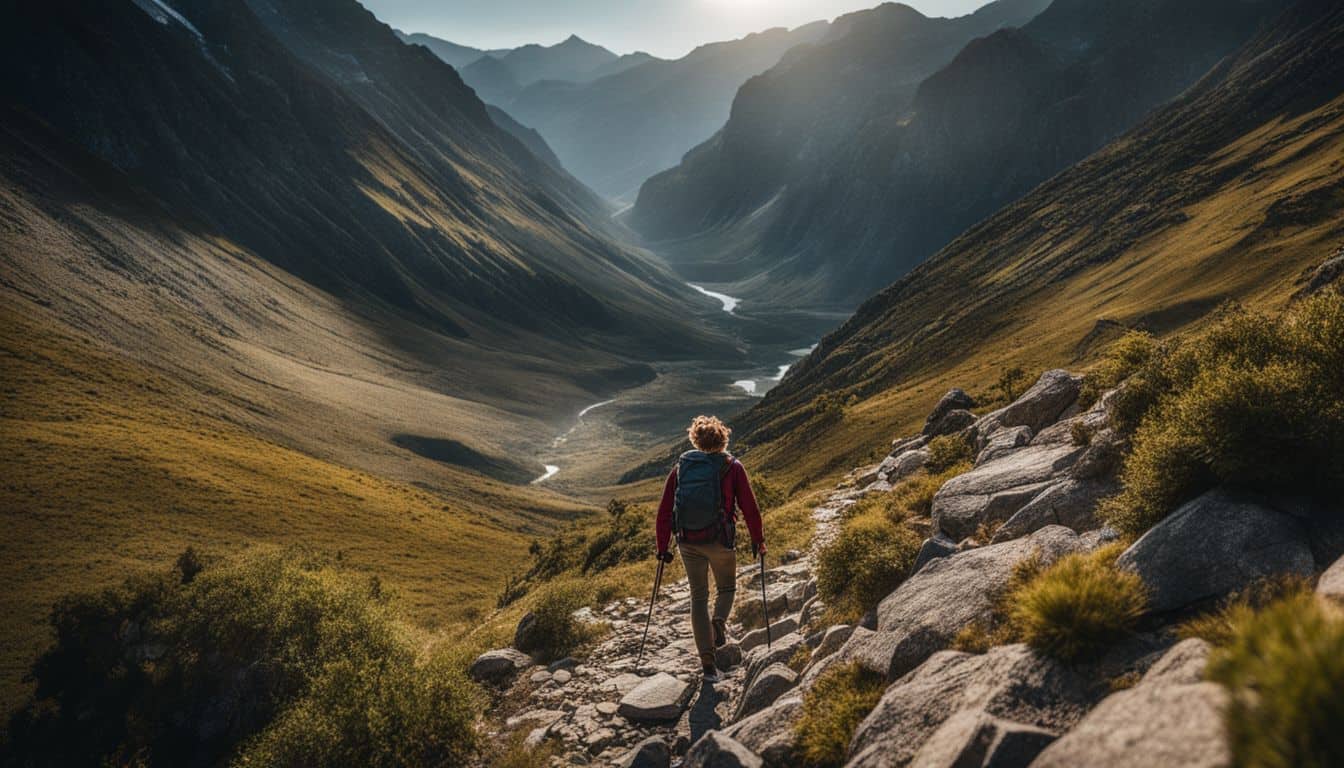
Engaging in outdoor adventures often brings us closer to nature’s beauty, but it also exposes us to potential hazards unique to the wilderness. From unpredictable terrain to changing weather conditions, being aware of the inherent risks and preparing accordingly is vital for every enthusiast looking to embrace the great outdoors safely.
Hiking
Hiking through nature offers an escape from the daily grind, but it’s not without risks. Each step on uneven terrain tests balance and endurance, turning a leisurely trail walk into a potential challenge.
With 53% of wilderness evacuations stemming from ankle injuries, hikers must stay vigilant to avoid rolled ankles or worse. Preparation is key; wearing supportive footwear and using trekking poles can help maintain stability.
Even with precautions in place, accidents occur. The most common hiking mishaps involve sprains and broken bones—accounting for 70% of non-fatal incidents outdoors. Those who tread carefully are less likely to join this statistic, but knowing how to respond helps, too.
Carrying a first-aid kit equipped with bandages, cold compresses, and splinting materials allows immediate action against injury onsite, while seeking medical attention becomes possible only after descending back to civilization.
Rock Climbing and Mountaineering
Rock climbing and mountaineering bring adventurers face-to-face with nature’s majestic heights, but they also come with risks that demand respect and preparation. Sharp rocks and steep ascents can lead to cuts, abrasions, or more severe injuries like broken limbs which account for 70% of non-fatal wilderness mishaps.
Whether scaling a craggy cliff or braving a snow-capped summit, climbers must be equipped with the knowledge of wilderness medicine and carry a first aid kit tailored to their journey.
Understanding altitude sickness is crucial for any mountaineer as symptoms like headache, nausea, and dizziness can quickly progress to dangerous conditions such as cerebral edema if elevation gain is too rapid without proper acclimatization.
Injuries often require immediate attention; therefore, being trained in wilderness first aid techniques could make a lifesaving difference until emergency medical help arrives. This same understanding extends into water sports, where different hazards await those who dare to conquer rivers and oceans.
Water Sports
Shifting from the heights to the depths, water sports present their own set of challenges and risks. Whether you’re kayaking, sailing, or paddleboarding, being on the water requires constant vigilance and respect for nature’s power.
Drowning remains a haunting reality in aquatic environments; recognizing its signs is crucial for timely rescue efforts. An individual struggling may not always wave for help but could exhibit subtler indicators like having their mouth at water level or displaying glassy eyes.
People engaging in these activities should never underestimate the importance of life jackets and proper training. True proficiency in swimming can’t be overstated, as it’s often what stands between safety and tragedy.
Budding enthusiasts should take heed of weather advisories and avoid treacherous waters during adverse conditions to prevent emergencies such as hypothermia or near-drowning situations—an all too common distress call that wilderness first responders receive.
Common Wilderness Injuries and Their Treatments
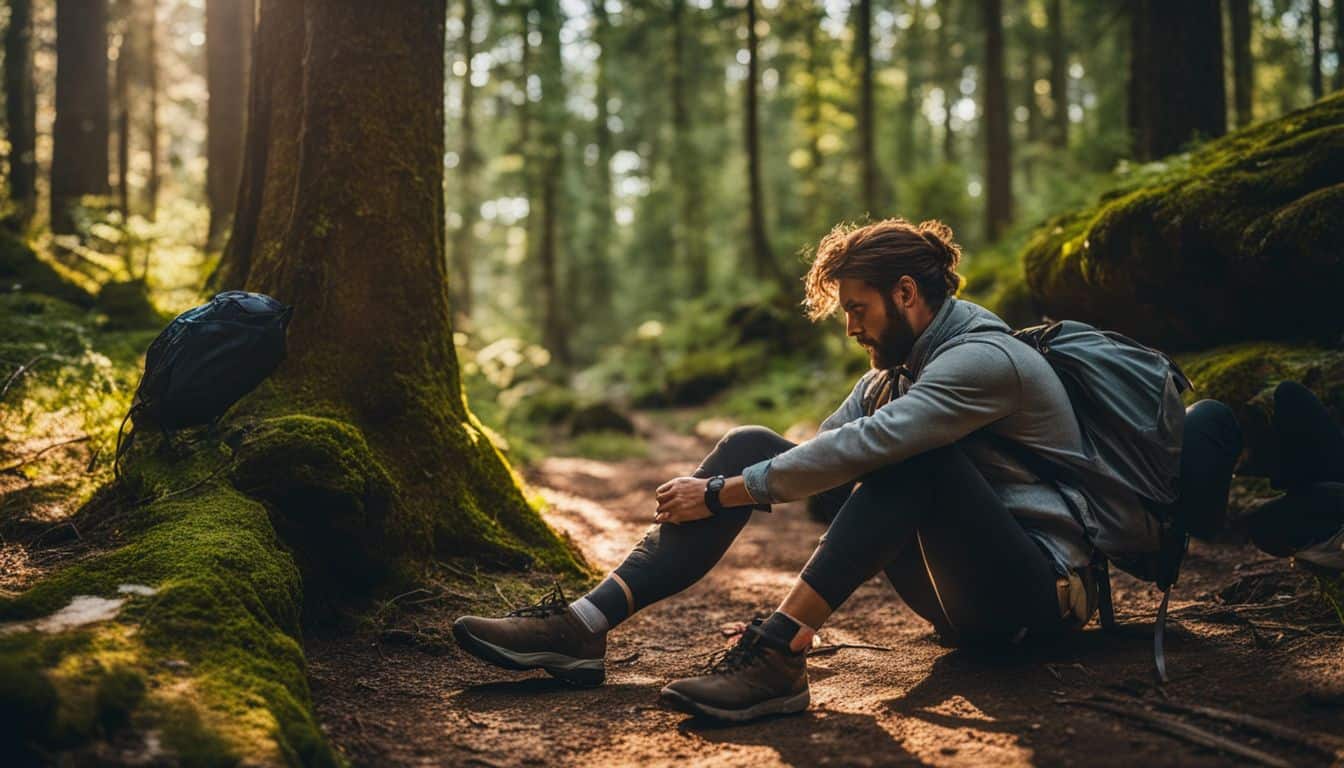
Preparation is key when adventuring into the great outdoors; understanding how to manage common wilderness injuries can be a lifesaver. From ankle sprains that alter your hike to unexpected encounters with wildlife or plants, we’ll guide you through effective treatments for these unplanned disruptions.
Sprained Ankles
Sprained ankles are a common occurrence in the wilderness and demand prompt attention. Knowing how to treat sprains is crucial with 53% of injury-related evacuations due to ankle issues.
- Immediately stop any activity to prevent further damage to the injured ankle.
- Gently support the ankle in a comfortable position, avoiding any movements that cause pain.
- Apply an ice pack or a cold compress to the affected area for 20 minutes; repeat every two hours for the first day.
- Wrap the ankle snugly with an elastic compression bandage, but ensure it’s not too tight to cut off circulation.
- Elevate the injured limb above heart level on a backpack or log, which helps reduce swelling and pain.
- Administer a nonsteroidal anti-inflammatory drug like ibuprofen for pain relief if available and safe for the individual.
- Keep weight off the sprained ankle; use a branch as a makeshift crutch if necessary to move around without stressing the joint.
- Continuously monitor for signs of increased pain, excessive swelling or changes in skin coloration that may indicate complications.
- If no improvement is seen within 24 – 48 hours, or if walking is still very painful, seek professional medical help as soon as possible.
Near Drowning
Near-drowning incidents can happen swiftly and are often silent. Recognizing the signs, such as a person with their mouth at water level and glassy eyes, is crucial in outdoor water activities.
- Ensure immediate safety by removing the person from the water as quickly as possible.
- Check for breathing and responsiveness; if absent, begin CPR promptly, avoiding any delay.
- Call for emergency help immediately; time is critical to increase the chances of recovery.
- Keep the victim warm using blankets or extra clothing to prevent hypothermia, which can follow a near-drowning experience.
- Monitor the person closely for vomiting that can further complicate their breathing.
- Do not offer food or drink because it could obstruct the airway or cause choking.
- Lay the person on their side in a recovery position if they are breathing but unconscious to maintain an open airway.
- If conscious, reassure them calmly while waiting for medical personnel to arrive; panic can exacerbate symptoms.
Cuts and Abrasions
After addressing the perils of near-drowning, it’s crucial to shift our focus to another common issue in the wild: cuts and abrasions. These injuries can happen quickly and unexpectedly, whether you’re navigating through dense brush or simply handling camping equipment.
- Act immediately to control any bleeding by applying direct pressure to the wound with a clean cloth or gauze.
- Rinse the cut thoroughly with clean water to remove any dirt or debris, which will help prevent infection.
- Apply antibiotic ointment if available, as this can further reduce the risk of bacterial growth in an open wound.
- Cover the cleaned cut with a sterile bandage or gauze pad; this keeps contaminants out and allows for proper healing.
- Change the dressing daily or whenever it becomes wet or dirty to maintain a clean, healing environment.
- Monitor the injury for signs of infection, such as increased pain, redness, swelling, or pus. Seek medical attention if these symptoms occur.
Head Injuries
Head injuries while enjoying outdoor activities can be sneaky and dangerous. It’s vital to know how to recognize and handle them, especially since immediate professional help might not be available.
- Assess injuries using the AVPU scale: This method helps determine the victim’s level of consciousness. Check if they are Alert, respond to Verbal stimuli, respond to Pain, or are Unresponsive.
- Monitor for signs of concussion: Look for confusion, headaches, dizziness, nausea, or changes in behavior that could suggest a concussion.
- Control bleeding with clean materials: If there’s any bleeding, apply pressure with a sterile cloth or bandage to reduce blood loss.
- Stabilize the neck and spine: Avoid moving the person unnecessarily as it might worsen spinal injuries; keep their head and neck immobilized.
- Evacuate immediately if necessary: Seek professional medical attention if the injured person loses consciousness for more than a few minutes or if alertness levels drop significantly.
Sunburn
Sunburn can quickly turn a great outdoor adventure into a painful experience. Here’s how to address it effectively and keep your skin safe.
- Apply sunscreen with at least 30 SPF before heading outdoors; reapply every two hours, especially if you’re sweating or swimming.
- Wear protective clothing such as long-sleeved shirts, hats with wide brims, and sunglasses to shield skin from the sun’s rays.
- Seek shade during the peak sun intensity hours between 10 AM and 4 PM when UV radiation is strongest.
- Drink plenty of water throughout the day to stay hydrated; this helps your skin recover from sun exposure.
- Use aloe vera gel or creams that contain it to soothe sunburned skin; its natural cooling properties aid in healing.
- Place cold compresses on burned areas for immediate relief; avoid ice directly on the skin, as it can cause more damage.
- Take pain relievers like aspirin or ibuprofen to reduce discomfort and inflammation from severe sunburns.
- Monitor for signs of heat-related illnesses, which can accompany serious sunburns, such as dizziness, headache, and nausea.
- Avoid further exposure to sunlight until your sunburn has healed completely to prevent compounding the damage.
Dehydration
Dehydration occurs when your body loses more fluids than it takes in, leading to a variety of symptoms. Recognizing and treating dehydration promptly is crucial, especially when enjoying the outdoors.
- Look for signs of dehydration like dark urine, an increased heart rate, a dry mouth, or feelings of fatigue.
- Treat dehydration quickly by finding shade or a cool place away from direct sunlight.
- Drink small sips of water regularly to replenish lost fluids; avoid gulping large amounts quickly.
- Use electrolyte solutions or sports drinks if available, as they can help restore the balance of minerals in your body.
- Check your vital signs and monitor any changes in alertness or consciousness.
- Keep drinking even after symptoms improve; continuing hydration is key to full recovery.
- Wear light-colored and loose-fitting clothing to reduce sweating and prevent further fluid loss.
- Plan your outdoor activities during cooler parts of the day to minimize the risk of heat-related dehydration.
- Educate fellow outdoor enthusiasts on the importance of carrying a sufficient water supply for any wilderness adventure.
Hypothermia
Hypothermia is a dangerous drop in body temperature that can happen even in mild climates. Immediate action is critical to prevent serious health consequences.
- Recognize the early signs; shivering, confusion, and slurred speech signal the onset of hypothermia.
- Remove any wet clothing from the person as these can lower body temperature further.
- Seek shelter from cold wind or rain to reduce the risk of temperature dropping.
- Gently warm the individual by wrapping them in blankets or using your own body heat if necessary.
- Provide warm, sweetened fluids if they’re awake and able to swallow, avoiding alcohol or caffeine.
- Keep moving is not advisable as it could worsen their condition. Instead, position them in a warm space while waiting for help.
- Use caution when warming up the person, as rapid heating can lead to complications. Slowly increase their core temperature instead.
Snake Bites
Snake bites pose a serious risk in the wilderness and demand prompt attention. Effective treatment is a crucial element of outdoor first aid skills.
- Stay calm and move away from the snake to prevent further bites.
- Keep the bitten limb at heart level to slow the spread of venom.
- Remove tight clothing or jewelry near the bite before swelling starts.
- Do not cut into the bite or attempt to suck out the venom, as this can cause more harm.
- Avoid using ice or submerging the wound in water; these methods can damage tissues.
- Immobilize the affected area with a splint if movement is necessary, but allow for slight swelling.
- Use compression bandages only if trained to do so; incorrect application can worsen the injury.
- Monitor for signs of shock, such as fainting or shortness of breath, and prepare to perform CPR if needed.
- Call local emergency services or use an emergency beacon if in a remote location.
- Provide clear information about your location and condition as accurately as possible.
- Track any changes in symptoms, noting any worsening conditions like difficulty breathing or loss of consciousness.
- Keep the patient still and comfortable, offering reassurance to help them remain calm.
- Wear protective clothing such as boots when hiking in areas known for snakes.
- Stay on marked trails and avoid tall grasses where snakes may hide.
- Follow through with any prescribed antivenom treatments from healthcare providers rigorously.
- Attend follow-up visits to ensure recovery is proceeding without complications.
Poisonous Plants
Exploring the wilderness means encountering various plants, some of which can be harmful. Poison ivy, poison oak, and poison sumac are the main culprits of outdoor skin troubles.
- Identify these plants by their distinct features: poison ivy and oak usually have leaves grouped in threes, while sumac has a longer leaf stem with paired leaflets.
- Skin contact with these plants can lead to rashes and blisters due to an oily resin called urushiol.
- Immediate action upon contact includes thoroughly washing the area with soap and water to remove the urushiol.
- Resist scratching the affected skin; breaking blisters may increase the risk of infection.
- Apply calamine lotion or hydrocortisone cream to ease itching and help reduce inflammation.
- Over-the-counter antihistamines can alleviate itching and swelling—just make sure they don’t make you too drowsy if you need to stay alert in the outdoors.
- Wearing long sleeves, pants, and gloves is an effective precaution against these toxic plants.
Ticks
Ticks in the wild are tiny but can pose significant health risks. They often hide in grassy, wooded, or brushy areas, waiting to latch onto a passing host.
- Check your body and clothing regularly: After spending time outdoors, inspect yourself, your children, and your pets for ticks. Pay special attention to hidden areas like under the arms, behind the knees, and around the waist.
- Remove a tick promptly: Using fine-tipped tweezers, grasp the tick as close to the skin’s surface as possible. Pull upward with steady, even pressure to avoid breaking off the tick’s body.
- Cleanse the bite area thoroughly: Scrub the bite site and your hands with soap and water after removal. An antiseptic is also beneficial for reducing infection risk.
- Protect yourself beforehand: Apply insect repellent that contains 20%-30% DEET on exposed skin when heading into tick-prone environments.
- Dress appropriately for tick prevention: Wear long sleeves, pants tucked into socks or boots, and light-colored clothing to make it easier to spot ticks before they find their way onto your skin.
- Know the symptoms of tick-related illnesses: Be alert for fever/chills, aches, fatigue or a rash. Lyme disease may present itself as a bullseye-shaped rash.
- Seek medical help if needed: If you experience any signs of illness following a tick bite or cannot remove the tick completely, consult a doctor immediately.
- Dispose of ticks correctly: Once removed, submerge it in rubbing alcohol or place it in a sealed bag before discarding it. Do not crush it between your fingers.
Dealing with Physical Injuries in the Wilderness
When confronted with an injury in the wild, your response can make all the difference. Learn to address physical trauma from sprains to fractures with techniques that could save a life or limb when professional help is miles away.
Blisters
Blisters can quickly turn a wilderness adventure sour if not managed properly. Preventing and treating these unwelcome companions is essential for outdoor enthusiasts to stay on their feet.
- Choose the right footwear: Good hiking boots offer support and cushioning, reducing friction that causes blisters.
- Break in new boots: Before taking them out on the trail, wear your boots around to ensure they fit comfortably.
- Keep feet dry: Moisture management is key; wet skin softens and is more prone to blistering. Use moisture-wicking socks and change them regularly.
- Use protective coverings: At the first sign of rubbing, apply a blister plaster or moleskin to vulnerable areas to prevent skin damage.
- Maintain foot hygiene: Cleanse your feet daily during extended trips outdoors to keep them free from irritants that could exacerbate blistering.
- Assess your socks: Make sure you’re wearing properly fitting socks without seams that can rub against the skin causing irritation.
- Disinfect your hands before touching the blister to prevent infection.
- Gently clean the area with mild soap and water or an antiseptic wipe if available.
- Apply a sterile dressing like a blister bandage or gauze pad, ensuring it’s snug but not too tight over the injury.
- Avoid popping the blister unless absolutely necessary; if it’s large or painful, use a sterilized needle from your first aid kit.
- Monitor for signs of infection such as increased redness, swelling, or pus.
- Change dressings daily or whenever they become wet or dirty.
- Protect the area by adjusting footwear or adding extra padding until healed.
Strains/Sprains
While blisters are a nuisance on the trail, strains and sprains can be much more disruptive to your outdoor adventure. It’s vital to know how to address these injuries, as 70% of non-fatal wilderness injuries relate to them.
- Recognize the signs: A strain or sprain may present with pain, swelling, bruising, and limited ability to move the affected joint.
- Stop activity immediately: Continuing to use the injured part can worsen the damage.
- Apply RICE treatment: Start by resting the injured area to prevent further harm. Ice should be applied for 20 minutes every two hours during the first 48 hours after injury. Wrap the area with compression bandages snugly but not so tight as to cut off circulation. Elevate the injury at or above heart level whenever possible.
- Use support if needed: If you need to move, consider using a splint or brace for additional support on the strained or sprained limb.
- Avoid heat: Skip hot showers, baths, or heating pads in the first 48 hours as they can increase swelling.
- Pain relief: Over-the-counter pain relievers like ibuprofen can help manage discomfort and reduce inflammation.
- Stay hydrated and nourished: This aids in recovery by ensuring that nutrients are delivered efficiently throughout your body.
- Monitor closely for changes: Keep an eye on symptoms and seek professional medical help if there’s no improvement within a few days.
Broken Bones
Broken bones can turn a wilderness adventure into a survival situation. Knowing how to manage fractures is essential for outdoor enthusiasts.
- Assess the victim’s condition using the DRABC (danger, response, airway, breathing, circulation) method to ensure they are stable before addressing the broken bone.
- Immobilize the injured area to prevent further injury. If you suspect a limb is broken, support it with a splint made from sticks or rigid items, and secure it with bandages or clothing strips.
- Control any bleeding by applying firm pressure around the wound with a clean cloth or bandage but avoid putting pressure directly on the fractured bone.
- Elevate the injured limb if possible to reduce swelling and pain.
- Monitor for signs of shock, such as paleness, cold skin, or rapid breathing. Keep the person warm and lying down while waiting for help.
- Avoid giving food or drink in case surgery is needed later on; however, if rescue is delayed, provide small sips of water to keep them hydrated.
- Prevent movement as much as possible. If you need to transport the victim yourself due to lack of help arriving soon, do so gently and carefully.
Burns
Treating burns in the wilderness requires prompt action to minimize damage and prevent infection. Most burns happen due to campfires or hot equipment, but knowing what to do can make a big difference.
- Assess the burn severity. If it’s a minor burn, cool the area immediately with clean, cold water for at least ten minutes.
- Remove rings or tight items from the burned area right away. Swelling can occur quickly, and these items may become stuck if not taken off.
- Cover the burn with a sterile gauze bandage. This protects blistered skin and helps prevent infection without adding pressure.
- Do not apply ice directly to any burn. Ice can cause further tissue damage which complicates recovery.
- Avoid breaking blisters that may form. Intact skin is a natural barrier against bacteria.
- Elevate the burned area if possible. This reduces swelling by slowing down blood flow to the injury.
- Hydrate by drinking water — this supports healing in all types of injuries including burns.
- Apply antibiotic ointment if available, especially for more serious burns that are prone to infection.
- Monitor for signs of heat exhaustion, as serious burns can exacerbate its effects on the body.
- Plan an evacuation if severe – for example, when covering significant body areas, affecting breathing or causing severe pain.
Necessity of a Wilderness First Aid Kit
Having a wilderness first aid kit is essential when embarking on any outdoor adventure. It equips you with the necessary tools to handle unexpected injuries, from minor cuts and abrasions to more serious conditions like sprains or even snake bites.
The unpredictable nature of outdoor environments demands preparedness for medical emergencies that may occur far from traditional emergency services. A well-stocked first aid kit serves as your first line of defense, providing immediate care which can prevent complications or stabilize an injury until professional help can be reached.
Carrying a comprehensive wilderness medicine kit could mean the difference between a quick recovery and long-term consequences. Supplies should include items for wound closure, such as sutures or adhesive strips, medications like antihistamines for allergic reactions, and materials for splinting potentially broken limbs.
Integration of specific remedies tailored to the environment’s hazards – whether it’s high altitude medication or heatstroke prevention aids – also contributes to successful management of health issues in remote areas.
Knowledge in using these supplies effectively complements their presence; hence, basic training in wilderness first aid becomes just as vital as the kit itself.
Conclusion
Venturing into the wild beckons with adventure, but it comes with its own set of risks. Knowledge is power when facing the unpredictable elements of nature. Equip yourself with valuable wilderness medicine skills to treat common injuries confidently.
Whether you’re a seasoned explorer or a weekend hiker, staying prepared ensures your outdoor experiences remain safe and memorable. Let this guide empower your journey beyond the beaten path!
What Are the Most Common Injuries and How to Treat Them in the Outdoors?
When enjoying the great outdoors, it’s important to be prepared for common injuries. Sprains, cuts, and insect bites are some examples. Carrying wilderness first aid essentials like bandages, antiseptic wipes, and splints can help treat injuries. Knowing how to use these items can make all the difference in an emergency.
FAQs
What should I do if someone gets injured in the wilderness?
If someone is injured outdoors, use RICE – rest, ice, compression, and elevation – to treat twisted ankles or other injuries. For serious conditions like chest pain or acute mountain sickness (AMS), seek immediate help from an emergency department.
Can I prevent altitude illness when climbing mountains?
Yes, you can reduce the risk of altitude illnesses like high-altitude pulmonary edema (HAPE) by acclimatizing slowly and staying hydrated. If symptoms occur, descend immediately and consult a medical professional.
How do you handle rattlesnake bites in the wild?
For rattlesnake bites, keep the affected area still and lower than your heart. Get medical assistance as soon as possible; anti-venom treatment may be needed for rattlesnake venom effects.
Are there medicines I should bring for heart problems on a hiking trip?
Carry prescribed medications such as beta-blockers (like metoprolol or atenolol), nitroglycerin for angina, or platelet inhibitors like clopidogrel if you’re at risk of heart issues like myocardial infarction or unstable angina.
What’s the best way to treat frostbite when camping in cold weather?
Warm frostbitten areas gradually but don’t rub them; this could damage your skin more! Frostnip needs gentle warming while superficial frostbite requires rewarming in warm water followed by careful bandaging.
My friend has trouble breathing at high altitudes – what might be wrong?
Your friend might have either acute mountain sickness (AMS) or more severe conditions such as high-altitude cerebral edema (HACE). They need to go down to a lower altitude quickly and see a doctor right away if they feel short of breath or very sick.
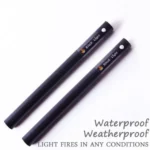
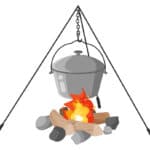

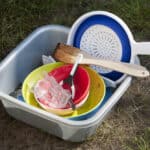


Leave a Reply